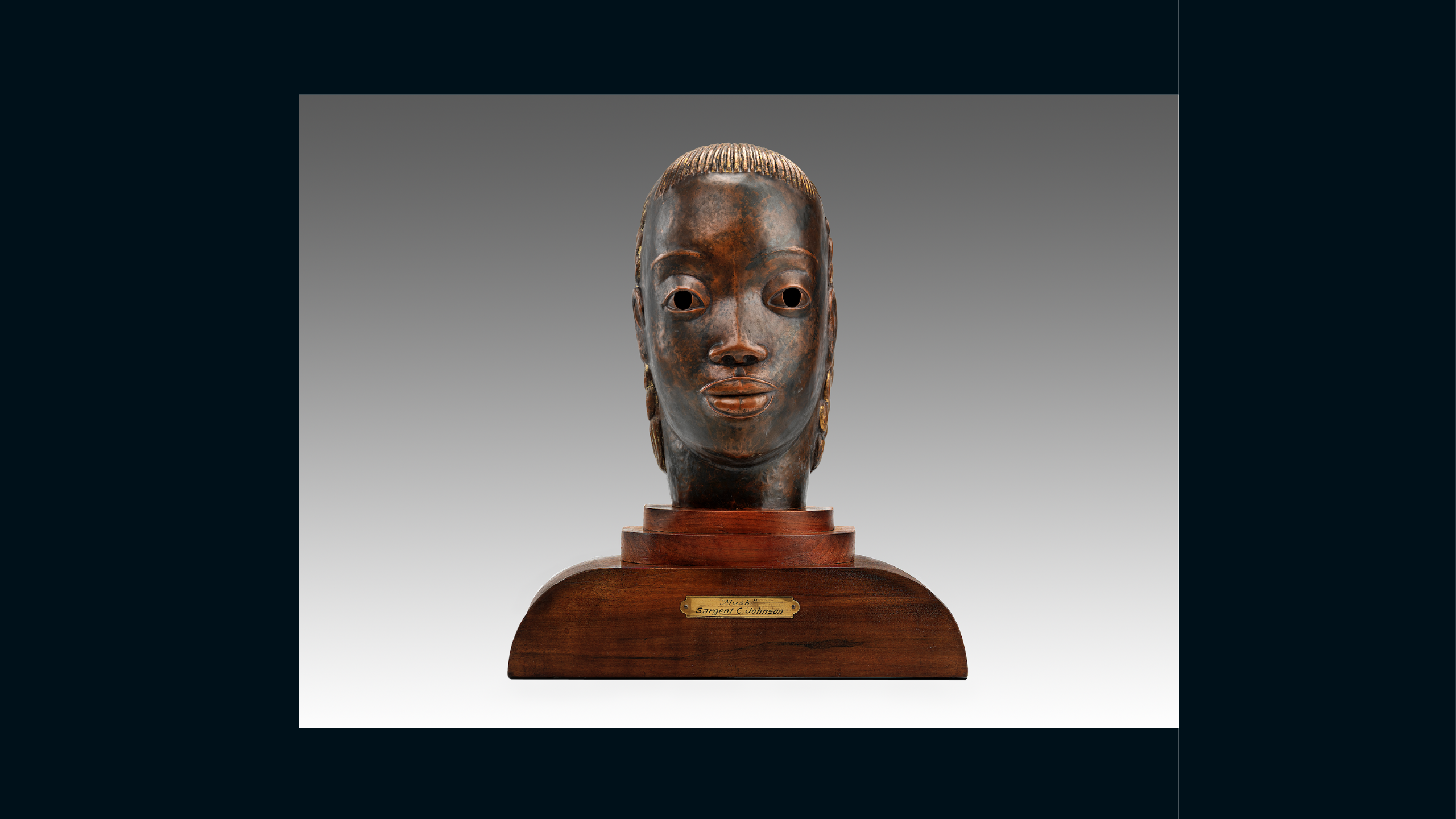Sargent Johnson’s Mask
Internationally renowned sculptor Sargent Johnson was committed to creating positive representations of African Americans and focused on celebrating black female beauty through his work.
“It is the pure American Negro I am concerned with, aiming to show the natural beauty and dignity in that characteristic lip and that characteristic hair, bearing and manner; and I wish to show that beauty not so much to the white man as to the Negro himself.” — Sargent Johnson quoted in San Francisco Chronicle, Sargent Johnson: Retrospective (Oakland: The Oakland Museum Art Division Special Gallery, 1971), 17.
In the 1920s, he learned to work cooper sheet metal as an assistant in the studio of sculptor Beniamino Bufano, one of his instructors at the California School of the Fine Arts in San Francisco. With “Mask,” Johnson positioned the image of the black face within a dialogue about race occurring among the poets and intellectuals of the Harlem Renaissance: Alain Locke, W. E. B. Du Bois, and Langston Hughes.
Sargent Johnson’s Mask and over 40 artworks by 34 African American artists are featured in African American Art in the 20th Century, a traveling exhibition organized by Smithsonian American Art Museum, on view at The Westmoreland now through January 17, 2021.
Header Credit Line: Sargent Johnson (1887-1967), Mask, ca. 1930-1935, copper on wood base. Smithsonian American Art Museum, gift of International Business Machines Corporation.
